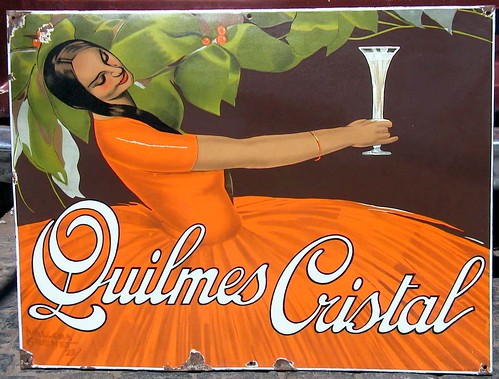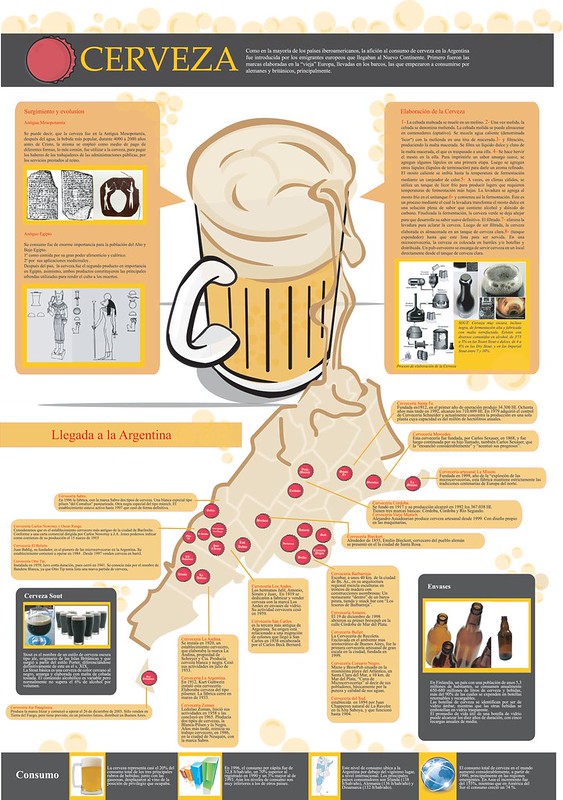![]()
Today’s infographic shows the beer scene in Argentina, as well as general information about beer and its history, too. I imagine I could say more about it if only I knew Spanish.
Beer Me Up, Scotty

For a little Friday frivolity, here’s a commercial for the Argentina beer Cerveza Andes, showing the Teletransporter devices they’ve installed in bars throughout South America. Try to ignore the misogynist overtones, and remember it’s meant to be a joke that plays on unfair stereotypes, which doesn’t mean you can’t find it funny. The idea is that Andes built transporters, like from Star Trek — sort of — to help men sneak out for a beer, without getting caught.
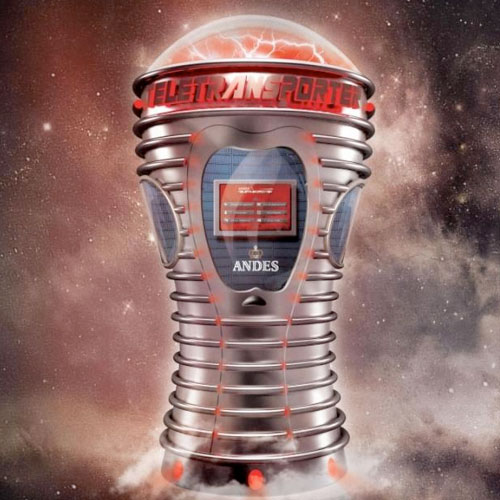
Here’s the description, from the ad agency that created the ads:
Many beer brands speak to men in a shared tone showing to them that they really understand their needs. Yet, up to now, all intentions were expressed by a message without and action plan. Andes, the leader beer in the Andina Region of Argentina, presents: Andes Beer: Teletransporter — a revolutionary invention capable of doing something almost impossible: men can now go to a bar and share an Andes beer with friends without having any problems with their girlfriends. Andes Teletransporter Booths have been installed at the main bars of Mendoza, Argentina. Einstein mentioned that teletransportation was impossible since objects could not conduct faster than light. Einstein was wrong!
But just watch the subtitled ad below.
While currently impossible, apparently we may actually be getting closer to teleportation, believe it or not. According to zdiaz.com :
In December of 1997, Scientists in an Austrian laboratory destroyed bits of light in one place and made perfect replicas appear about 3 feet away. In 2004 Physicists carried out a successful teleportation with particles of light over a distance of 600 meters across the River Danube in Austria. And in 2006 Physicists demonstrate the first successful entanglement of the quantum states of photons (in a laser beam) with the quantum states of physical matter. Sure this is a long way from having breakfast in Paris, lunch in New York and Dinner in Beijing, but we are almost getting there.
It was reported by the BBC in Teleportation goes long distance and in Teleportation breakthrough made and it was also done successfully in Japan, as reported in Quantum leap: bits of light successfully teleported. And then last year, they broke a new distance record when Physicists Quantum Teleport Photons Over 88 Miles. It may be a very long way off, but who knows. Maybe someday we really can say, “beer me up, Scotty.” Here’s an interesting overview of the science behind teleportation, if you’re interested in learning more about it. And here’s another one by Gary Garrison and also one from How Stuff Works?

Argentina Beer
![]()
Today in 1816, Argentina gained their Independence from Spain.
Argentina
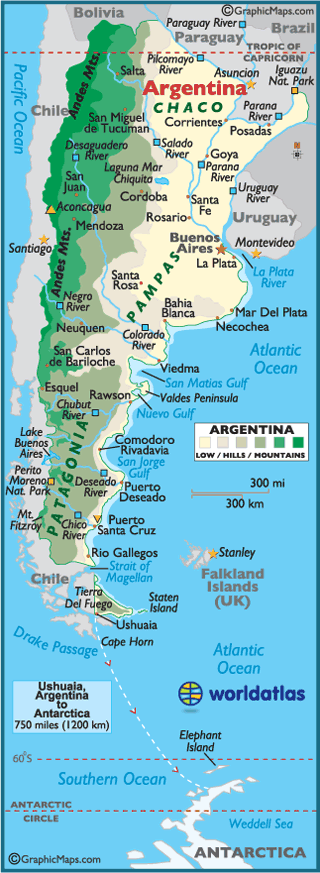
Argentina Breweries
- Antares
- Australis
- Ayzembeer Cerveza Artesanal
- Bachmann Cerveza Artesanal
- Bebidas Animadas SRL
- Berlina Brew House & Restaurante
- Bersaglier
- Buller Brewing
- CCU Argentina
- Cervecería Argentina SA (CASA) Isenbeck
- Cervecería Artesanal Antares
- Cervecería Artesanal Barba Roja
- Cerveza Artesanal de Maíz Indias
- Cervecería Artesanal El Bolsón
- Cerveceria Beagle
- Cervecería Brahma Argentina
- Cervecería El Búho
- Cervecería Epulafquen
- Cerveceria Hain
- Cervecería Jerome
- Cervecería La Cruz
- Cerveceria del Sur
- Cervecería Jagger
- Cerveceria Santa Fé (CCU Argentina)
- Cervecería y Maltería Quilmes: Corrientes, Godoy Cruz, Quilmes, San Miguel de Tucumán, Zárate
- Cerveza Andes
- Cerveza Sur Patagonica
- Cordillera Brewing
- Cordoba Brewery
- Cork Brewing
- Cortesana: Cervezas Artesanales
- Corsario Negro Beers and Brewpub
- Duff Beer
- Estrella De Galicia Sa
- Fábrica de Cerveza Artesanal Viejo Munich
- Fisherman’s Beer Microcerveceria
- Grupo CICSA
- Leprechaun
- Manush Cerveza Artesanal
- Otro Mundo Brewing
- Santa Fe Brewery
Argentina Brewery Guides
- Beer Advocate
- Beer Me
- Cerveza de Argentina
- Rate Beer
Other Guides
- CIA World Factbook
- Official Website
- U.S. Embassy
- Wikipedia
Guilds: Asociacion de Cerveceros Artesanales; La Asociacion de Cerveceros Artesanales de la Republica Argentina
National Regulatory Agency: None
Beverage Alcohol Labeling Requirements: Not Known
Drunk Driving Laws: BAC 0.05%
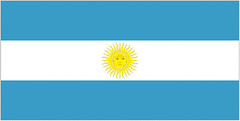
- Full Name: Argentine Republic
- Location: Southern South America, bordering the South Atlantic Ocean, between Chile and Uruguay
- Government Type: Republic
- Language: Spanish (official), Italian, English, German, French
- Religion(s): Nominally Roman Catholic 92% (less than 20% practicing), Protestant 2%, Jewish 2%, other 4%
- Capital: Buenos Aires
- Population: 42,192,494; 32nd
- Area: 2,780,400 sq km, 8th
- Comparative Area: Slightly less than three-tenths the size of the US
- National Food: Asado, Empanada
- National Symbols: Puma, Rufous Hornero (bird); Ceibo flower; Ceibo, Red Quebracho trees; Yerba mate, Obelisk of Buenos Aires; Sun of May, Cockade of Argentina; Río de la Plata (River Plate)
- Affiliations: UN, OAS
- Independence: From Spain, July 9, 1816
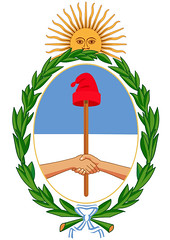
- Alcohol Legal: Yes
- Minimum Drinking Age: 18
- BAC: 0.05%
- Label Requirements: N/A
- Number of Breweries: 54

- How to Say “Beer”: cerveza
- How to Order a Beer: Una cerveza, por favor
- How to Say “Cheers”: Salud / Cheers
- Toasting Etiquette: If you are toasted, return the favor. In Argentina, ‘Salud!’ or ‘Cheers!’ are popular toasts.
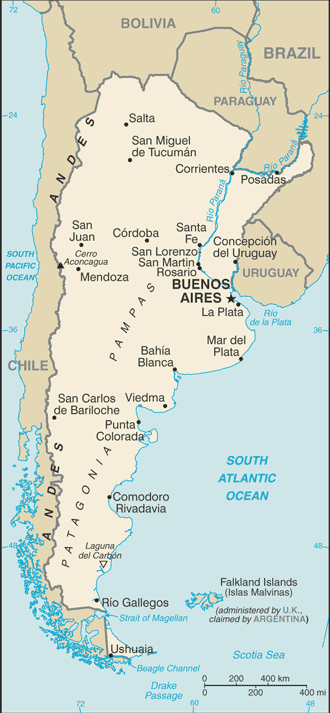
Alcohol Consumption By Type:
- Beer: 32%
- Wine: 59%
- Spirits: 7%
- Other: 2%
Alcohol Consumption Per Capita (in litres):
- Recorded: 8.00
- Unrecorded: 2.00
- Total: 10.00
- Beer: 2.49
WHO Alcohol Data:
- Per Capita Consumption: 8 litres
- Alcohol Consumption Trend: Stable
- Excise Taxes: N/A
- Minimum Age: 18
- Sales Restrictions: Time, specific events
- Advertising Restrictions: No
- Sponsorship/Promotional Restrictions: No
Patterns of Drinking Score: 2
Prohibition: None
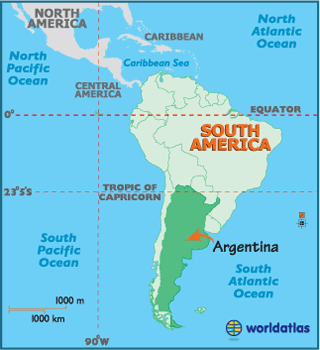
Did Lager Yeast Come From Patagonia?

You probably saw this little item, it’s been all over the interwebs over the last few days, about a group of eight scientists positing that a newly discovered yeast strain, dubbed Saccharomyces eubayanus, may have hitched a ride from Patagonia, in South America, to Europe where it got busy with local yeasts there — notably Saccharomyces cerevisiae — to form the yeast we know today as lager yeast, or Saccharomyces pastorianus (a.k.a. Saccharomyces carlsbergensis).
The academic paper, to be published in the August edition of the journal Proceedings of the National Academy of Sciences of the United States of America (or PNAS), goes by the rather dry title, Microbe domestication and the identification of the wild genetic stock of lager-brewing yeast. The Abstract summarizes the paper:
Domestication of plants and animals promoted humanity’s transition from nomadic to sedentary lifestyles, demographic expansion, and the emergence of civilizations. In contrast to the well-documented successes of crop and livestock breeding, processes of microbe domestication remain obscure, despite the importance of microbes to the production of food, beverages, and biofuels. Lager-beer, first brewed in the 15th century, employs an allotetraploid hybrid yeast, Saccharomyces pastorianus (syn. Saccharomyces carlsbergensis), a domesticated species created by the fusion of a Saccharomyces cerevisiae ale-yeast with an unknown cryotolerant Saccharomyces species. We report the isolation of that species and designate it Saccharomyces eubayanus sp. nov. because of its resemblance to Saccharomyces bayanus (a complex hybrid of S. eubayanus, Saccharomyces uvarum, and S. cerevisiae found only in the brewing environment). Individuals from populations of S. eubayanus and its sister species, S. uvarum, exist in apparent sympatry in Nothofagus (Southern beech) forests in Patagonia, but are isolated genetically through intrinsic postzygotic barriers, and ecologically through host-preference. The draft genome sequence of S. eubayanus is 99.5% identical to the non-S. cerevisiae portion of the S. pastorianus genome sequence and suggests specific changes in sugar and sulfite metabolism that were crucial for domestication in the lager-brewing environment. This study shows that combining microbial ecology with comparative genomics facilitates the discovery and preservation of wild genetic stocks of domesticated microbes to trace their history, identify genetic changes, and suggest paths to further industrial improvement.
Mainstream media, picking up the story, has sensationalized it, looking for the human angle. For example the L.A. Times compared the discovery to finding the evolutionary missing link, titling their piece Scientists find lager beer’s missing link — in Patagonia. Essentially, they detail the scientists’ five-year quest to answer the question of where lager yeast originated, and how it came to be. The answer, according to the new paper, is a newly found strain of yeast discovered in the forests of Argentina’s Patagonia region. The wild yeast was named Saccharomyces eubayanus, and it was found living on beech trees.
According to the Times’ report:
Their best bet is that centuries ago, S. eubayanus somehow found its way to Europe and hybridized with the domestic yeast used to brew ale, creating an organism that can ferment at the lower temperatures used to make lager.
Geneticists have known since the 1980s that the yeast brewers use to make lager, S. pastorianus, was a hybrid of two yeast species: S. cerevisiae — used to make ales, wine and bread — and some other, unidentified organism.
Then one of the eight, Diego Libkind, a professor at the Institute for Biodiversity and Environment Research in Bariloche, Argentina, discovered sugar-rich galls on southern beech trees in Patagonia. Yeast were drawn to the galls like a moth to a flame, and had been used by native populations to make a fermented beverage. The yeast in the galls was sent to the University of Colorado, who analyzed the genome, finding that it was 99.5% identical to lager yeast. They named the new yeast Saccharomyces eubayanus, presumably because of its similarity to Saccharomyces bayanus, a yeast commonly used to make cider and wine. Said Stanford geneticist Gavin Sherlock, quoted in the L.A. Times: “The DNA evidence is strong.”
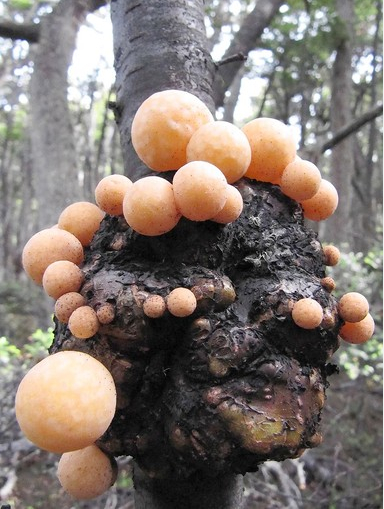
Naturally, Sherlock, and many others have been wondering how Saccharomyces eubayanus hitched a ride to Bavaria at a time when there was no known contact between the two parts of the world, separated by an ocean and some 8,000 miles. The article also states that “Lager was invented in the 1400s,” though my memory is that European brewers were using lager yeast well before that, and it was the lagering process was developed in the 1400s, but perhaps I’m not remembering that correctly.

In an interesting development surrounding this debate, U. Penn biomolecular archeologist, Patrick McGovern (author of Uncorking the Past), weighed in with his thoughts at the MSNBC article about this story, Beer mystery solved! Yeast ID’d. Here’s what McGovern had to say, as summarized by author John Roach:
Assuming the genetics work is correct, he said he is “troubled by how this newly discovered wild yeast strain made it into Bavaria in the 1500s.”
For one, he noted, Germans, and especially Bavarians, were not involved in the European exploration of Patagonia at the time. So, if the yeast somehow hitched a ride back to Europe via trade with the English, Spanish, and Portuguese, how did it get to Bavaria?
“Perhaps, some Patagonian beech was used to make a wine barrel that was then transported to Bavaria and subsequently inoculated a batch of beer there?” he asked. “Seems unlikely.”
He said a more likely scenario is that galls in the oak forests of southern Germany also harbored S. eubayanus, at least until it was out competed by the more ubiquitous S. cerevisiae.
“If true, then the use of European oak in making beer barrels and especially processing vats, which could harbor the yeast, might better explain the Bavarian ‘discovery’ of lager in the 1500s,” he said.
Nevertheless, he added, history and archaeology are full of surprises.
“Nowhere is this more true than of the seemingly miraculous process of fermentation and the key role of alcohol in human culture and life itself on this planet,” he said.
“This article has begun to unravel the complicated heritage and life history of the fermentation yeasts, and will hopefully stimulate more research to see whether the Patagonian hypothesis proves correct.”
Diplomatically put, because as everyone admits, the find in South America may not be the exclusive area where Saccharomyces eubayanus lives, just the first place it’s been found. The human history portion of this story doesn’t seem to quite fit at this point, but it’s certainly a compelling story and it will be interesting to see how it continues to develop.

South Beer Cup Winners Announced
![]()
Regular readers have probably noticed that my usual output has been diminished here of late, that’s because I’ve been in Buenos Aires, Argentina since Monday. I was fortunate enough to be invited to judge at the very first South Beer Cup, South America’s version of the Great American Beer Festival and the Craft Brewers Conference combined. It was put on by the Centro de Cata de Cerveza with support from the very active local homebrew club, Somos Cerveceros.
They had 280 beers from 72 breweries entered in 20 categories from four countries: Argentina, Brazil, Chile and Uruguay. Along with the local judges, made up of brewers and BJCP certified judges, four experienced judges from North America were on hand to help out. In addition to myself, there was Stephen Beaumont, Doug Odell and Pete Slosberg. The four of us also each gave a short talk during the conference portion of the event.
But more about that later, last evening at a gala awards ceremony held at the rooftop of the American Club. It was a great event, and perhaps the best part was seeing the enthusiasm and passion on display as the excited winners went up to accept their awards, all to some very dramatic music. So without further ado, here s the list of the winners for the first South Beer Cup:

- Pilsner
- Bronze: Colorado (Brazil)
- Oktoberfest
- Bronze: Buller (Argentina)
- Pale Ale
- Bronze: Davok (Uruguay)
- Golden/Blonde Ale
- Silver: TIE: Duff (Argentina) / Eisenbahn (Brazil)
- Bronze: Carmela (Argentina)
- India Pale Ale
- Gold: Davok (Uruguay)
- Silver: Fenicia (Argentina)
- Bronze: Backer (Brazil)
- Amber/Red Ale
- Gold: Yeska (Argentina)
- Silver: Antares (Argentina)
- Bronze: El Viejo Hobbit (Argentina)
- Honorable Mention: Piltri (Argentina)
- Wheat Beer
- Silver: Baden Baden (Brazil)
- Bronze: Bier Hoff (Brazil)
- Honorable Mention: Cabezas Bier (Uruguay)
- Dry Stout
- Silver: Bodebrown (Brazil)
- Bronze: TIE: Carmela (Argentina) / Kross (Chile)
- Imperial Stout
- Silver: Montecristo (Argentina)
- Bronze: Antares (Argentina)
- Porter
- Bronze: TIE: Antares (Argentina) / Alumine (Argentina) / La Cruz (Argentina)
- Brown Ale
- Bronze: Fenicia (Argentina)
- Barley Wine
- Bronze: Davok (Uruguay)
- Honorable Mention: TIE: La Cruz (Argentina) / Una Mas (Argentina)
- Smoked Beer
- Gold: Gulmen (Argentina)
- Silver: Bamberg (Brazil)
- Bronze: Berlina (Argentina)
- Specialty Beer
- Gold: Baden Baden (Brazil)
- Additional Honorable Mentions [w/style]: Baden Baden [Golden] (Brazil) / Dowel [Grape] / Silberweizen [Weizen Bock] / Sixtofer [Scarlet] (Argentina) / Szot [Strong Ale] / Von de Brauer [Red Ale] / Jerome [Diablo] (Argentina)
- Honey Beer
- Silver: TIE: Antares (Argentina) / Fenicia (Argentina)
- Kolsch
- Bronze: Antares (Argentina)
- Dunkel
- Silver: TIE: Bamberg (Brazil) / Eisenbahn (Brazil)
- Belgian Dark Ale
- Bronze: Eisenbahn (Brazil)
- Munich
- Silver: Bamberg (Brazil)
- Schwarzbier
- Silver: Bamberg (Brazil)
- Bock
- Bronze: Blest (Brazil)
- Old Ale
- Silver: Bodebrown (Brazil)
Congratulations to all the winners.
And here’s all the participating breweries:
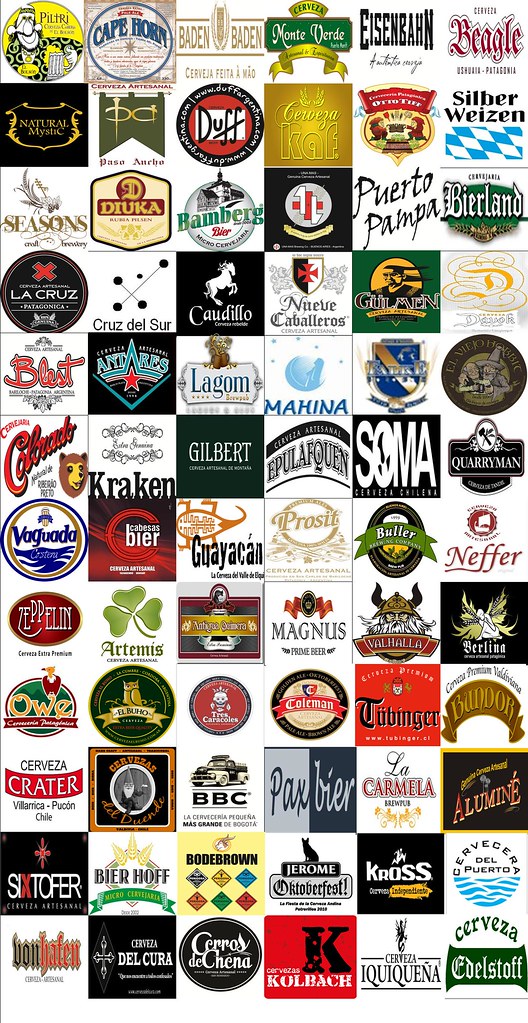
Beer In Art #127: Carlos Morel’s Duel In The Taproom

This week’s work of art is by an artist from Argentina, Carlos Morel. I saw the original in Buenos Aires at the Museo Nacional de Bellas Artes. The painting is known as Payada en Una Pulperia or Duel in the Taproom and was created in 1840.
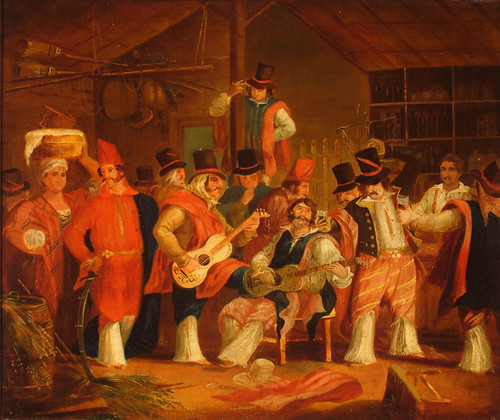
The duel depicted in the painting is of the musical variety, with two guitar players squaring off against one another to the general merriment of all the people drinking in the taproom.
Morel is considered to be Argentina’s first great painter. He was born in Buenos Airies in 1813 and lived until 1894, painting a great number of watercolors and oil paintings throughout his career. Here’s a translated biography
Beer In Ads #369: Quilmes Le Mejor Cerveza

Friday’s ad is the last for Quilmes, from 1968, and it certainly looks like quite a party. Love the hairstyles.
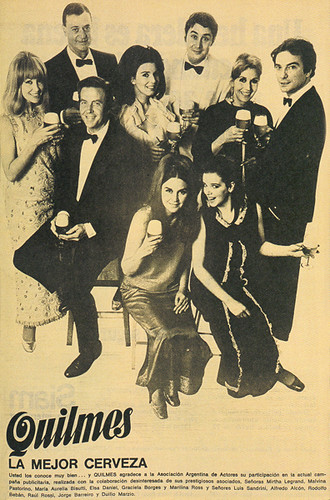
Beer In Ads #368: Quilmes’ Parchment

Thursday’s ad is for Quilmes Cristal, and is on some kind of parchment, or at least paper made to look that way. I don’t actually know how old it is, but it looks old, or perhaps again it was made to look that way.
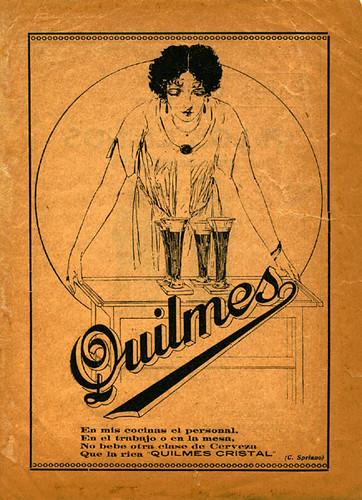
Beer In Ads #367: Quilmes In The Clouds

Wednesday’s ad is a modern Quilmes poster, a beautiful image of the beer on, perhaps, cloud nine, with the sun behind it and trees and balloons circling the bottle.

Beer In Ads #366: Quilmes Cristal

Tuesday’s ad is another one for Quilmes, probably also from around the 1920s or 30s. It was for their light-colored Cristal. I saw an original of this beautiful sign last night in the home of one of Argentina’s most prominent breweriana collectors. His home was amazing, literally filled with beer collectibles from all over the world, but with a special emphasis on local Argentinian beer.
